
Azaleas at Myohonji Temple
Steve MortonEnjoy the sights and tranquility of one of Kamakura’s most peaceful temples, especially from around, mid-April to May, where the colorful azaleas add extra vibrancy to this wonderful place

Myohonji, located in the heart of Kamakura, is one of the oldest Nichiren-sect temples of Japanese Buddhism. Despite its city location, the temple is renowned for its tranquil atmosphere and lush encircling nature. It also tends to be less touristy than other temples in the area.
Myohonji was founded in 1260 by Hiki Yoshimoto after he encountered the Buddhist priest and philosopher Nichiren Shonin in Kamakura. The site of the temple was previously home to the Hiki clan, before they were defeated by the Hojo clan in the early 1200s. Hiki Yoshikazu donated his home to Nichiren Shonin for the souls of his fallen clan, which later grew to be Myohonji.
Some notable structures include Soshido, Myohonji’s largest temple building, Nitenmon gate, a beautiful inner gate, and a bronze statue of Nichiren. Enjoy the temple grounds in all seasons with spring cherry blossoms, verdant summer foliage, fiery autumn maple and ginkgo leaves, and winter plum blossoms.
Myohonji Temple is about a 10 minute walk from Kamakura Stations. For general directions, walk along the main street, (Wakamiya Oji), and head south, turning left when you reach Honkauji Temple. From here, continue walking up a slope that will eventually lead up to the front gate of this temple

Enjoy the sights and tranquility of one of Kamakura’s most peaceful temples, especially from around, mid-April to May, where the colorful azaleas add extra vibrancy to this wonderful place

Myohon-ji is an absolutely gorgeous temple, just ten minutes on foot from Kamakura Station. The funny thing is, most people don’t even know it’s there.
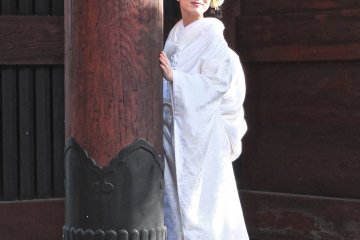
Imagine my surprise last time I was at Myohonji in Kamakura (December 2014) to find not only one, but two traditional wedding shoots in progress.

One reason Myohon-ji Temple is so lovely is its isolation. Way up a slope, surrounded by forest. Which is amazing considering it is a short walk from Kamakura Station
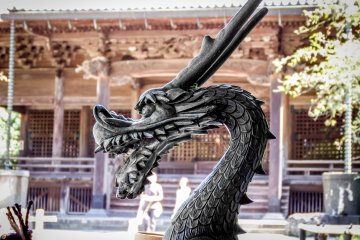
Although every temple has a story, Kamakura`s Myohonji Temple is the stuff of legends. Visit it and you`ll see why!
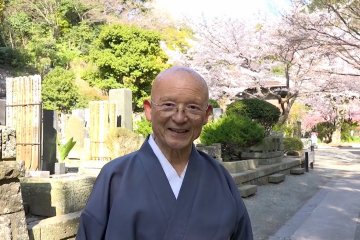
Feel a peaceful moment at Myohon-ji, one of the quietest temples in Kamakura

Elegant pink flowers bloom in mid April at Myohon-ji temple. Although this temple is very close to JR Kamakura Station, it always maintains a tranquil beauty.

Taisen-kaku is a 100-year-old inn just seconds away from Hase Kanon Temple. The service they provide will leave you with a memorable experience of your time in Kamakura.
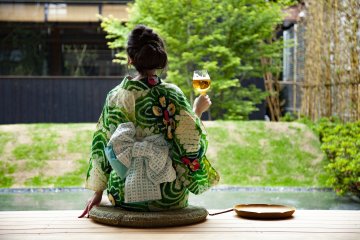
Kishi-ke is traditional, yet modern, Japanese-style inn that aims to connect guests with the present and help them achieve inner harmony through its peaceful design and cultural experiences.
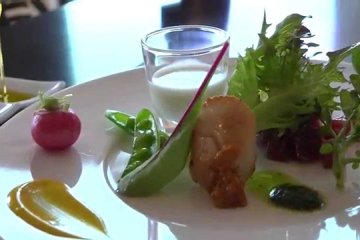
Lunch at The Scapes, Hayama: Enjoy really delicious vegetables, a nice tender steak and tasty deserts, a sophisticated atmosphere and stunning seashore view.

Taste Aratama's famous fried pork cutlet and fall in love with the fresh flavors. Tonkatsu isn't all that's on the menu. Be sure to try Aratama's other dishes like mozzarella menchi katsu and cream croquette.

Discover the taste that Kamakura locals are in love with. New German's fluffy custard-filled sponge cakes are a dessert that is sure to impress. The caramel custard flavor is especially popular with visitors.

At the creative French restaurant, Nature et Sens, diners are treated to an experience for the senses. Seasonal ingredients and Kamakura produce take centerstage in these fantastically beautiful dishes. Enjoy a glass of wine with your meal from their wide selection for the ultimate experience.

Yakumo Shrine, also called Yakumo Jinja, was established around 1082 by Yoshimitsu Minamoto—a Minamoto clan samurai during the Heian Period—and is believed to be the oldest talismanic shrine in Kamakura. It is located in the Omachi neighborhood and is said to ward off bad luck. Yoshimitsu Minamoto founded the shrine to help protect the people of Kamakura against the many epidemics that had taken hold of the area. The shrine represented a branch of Gion Shrine (modern day Yasaka Shrine) in Kyoto, which was known for its protection against illnesses. When the severity of Kamakura’s epidemics lessened in 1084, the shrine became a popular spot to repel bad luck. Today, the shrine is a small, quiet, and off-the-beaten-path spot to pray for good luck. Enjoy the peaceful grounds and be sure to collect a red Goshuin stamp at the shrine’s office to commemorate your visit.

Hongakuji Temple (本覚寺) is dedicated to Ebisu, part of the Kamakura seven deities of good luck. The temple was founded by Ashikaga Mochiuji in 1436.

Tsurugaoka Hachimangu Shrine is arguably the most important shrine in Kamakura and is located roughly in the center of the city. The shrine was originally founded in 1063 by Minamoto Yoriyoshi, the head of Japan’s Minamoto Clan, and was later moved in 1180 to its current location by Minamoto Yoritomo, the founder and first shogun of the Kamakura shogunate. This relocation marked the start of samurai society and Kamakura as a spiritual and social center of Japan. This rich history and culture is still present in Kamakura today. The shrine is dedicated to Hachiman, the guardian deity of samurai and the Minamoto Clan. Hachiman is worshiped for good fortune in warfare. The long pathway to the shrine runs through Kamakura City and is marked by multiple red torii gates, showing an interconnectedness between spirituality and urban life. Upon entering the shrine grounds, you will see two ponds on either side of you. The pond on the left represents the Minamoto clan, and the one on the right represents the Taira Clan (Minamoto’s rival). The Taira pond purposefully has four islands in it, which symbolizes the bad blood between the clans as four can be pronounced the same as “death” in Japanese. Beside the Minamoto pond is a beautiful peony garden that is open in winter and spring when the flowers are in full bloom. Past the ponds you will come across the mai-den, which is located at the base of the stairs to the main hall. This vibrant red building is used as a stage for music and dance performances throughout the year’s festivities. Atop the wide staircase is the main hall. This traditionally designed structure features a red facade with gold-and-green detailing and is a commanding sight due to its massive size. Beside the main hall is a treasure hall that displays historical artifacts such as swords and masks. The grounds are also home to numerous smaller buildings and shrines, most notably Wakamiya and Maruyama Inari Shrine, which, along with the main hall, are nationally important cultural properties. Tsurugaoka Hachimangu hosts numerous events throughout the year. One of the shrine’s most popular festivals occurs from September 14th to 16th and features yabusame horseback archery. The shrine is also one of Japan’s most popular spots for hatsumode, which is the first shrine visit of the year.